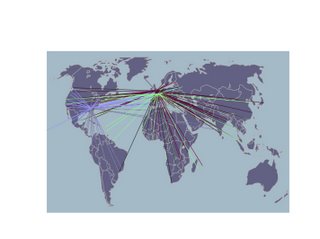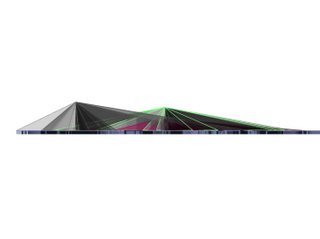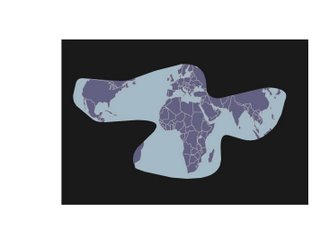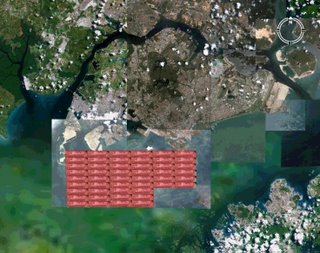Monday, October 30, 2006
Segue Cities
I hope that these Segue Cities can become sites for a new system of global interaction. I suspect that many of these cities will encounter similar problems of population growth, unsightly conditions around the port areas, and a general confusion and inefficiency of distribution of people and goods. I plan to analyze the largest Segue Cities an pose a plan for the construction of an off coast island which could perhaps serve an of shore port/airport for a more efficient distribution of cargo and passenger traffic.
One very interesting corner is the North Sea. London and Paris are two mega cities which depend on a large import export business; the London, Paris, and Amsterdam airports are among the worlds largest, four of the world's largest ports are located here and finally, all of the countries in this general area contain strong rail and interstate networks. As the population continues to grow and more pressures are felt of the expansion of airports and ports what could a solution be to make the transport of goods and passengers in and out of the area more efficient. Inspired by an earlier case study on Kansai International Airport in Osaka, I began to wonder if it would be possible to build an island in the North Sea which would serve as a major airport and seaport to receive and send northern Europe's goods and passengers throughout the rest of the globe. A chunnel type system could allow interstate highways and trains to access the island working with the seaport and airport.
Thus, I hope that the map will reveal some of the world's most important Segue Cities; the cities that ship and distribute most of the world's goods.
This excel spread sheet is a quick matrix of what the map will try to show graphically. The following are two images from an early attempt at the new mapping:
Monday, October 23, 2006
Wednesday, October 18, 2006
Mapimation Latest Updates
Tuesday, October 17, 2006
Mapimation Update
Some exceptions to occur,
My map intends to explore the spheres of influence of the major airlines and the countries they represent and it goes further attempting to predict future dominant powers as represented by air superiority. Based on the growth of airlines and the rate of change in population/per capita GNP the map predicts which airlines will rise next to bring their countries to the economic forefront of the globe. The best prospect, no surprise, seems to be
Thursday, October 12, 2006
10.12.06
Seven of the world's 20 largest airlines have been mapped, the colors coordinate to the airlines as follows: blue=Delta Airlines, purple=American Airlines, magenta=Air France/KLM, red=Japan Air, orange=British Airways, green=Qantas Air, and gray=Korean Air.
The next step will be to find a way in which animation can make certain patterns and the overall mapping clearer to understand. I also hope to add a volume to each of the flight paths rather than just a line. I hope that solid mass will create an airline mountain range across the globe which can be cut in different areas to study in section, in plan, in elevation, and hopefully also from a perspective point of view. Let me know if you have any suggestions on what you think could help the mapping.
Monday, October 09, 2006
10.09.03 Mapimation Update
Hopefully a more elaborate revision of the previous animations can be combined with a mapping of demographic statistics such as, standard of living numbers, per capita income, or city population growths and reflect a relationship between a city and its connection to the rest of the world. My hope is that these studies will offer a valid study of population growths, population shifts, economic development and global relations over the last two and a half decades.
Wednesday, October 04, 2006
Mapimation Proposal
The first attempt at my mapimation is linked below. This animation is a fictional representation of Hartsfield-Jackson airport in Atlanta and its growth over the last 40 years. The metaball forms are used to represent the size of the airport in number of passengers per year, the main routes flown from the airport and the average distance of flights traveling from the airport.
Click here to see the animation. Also, this video, links to a 24 hour mapping of flights entering and leaving Hartsfield-Jackson International Airport.
Monday, October 02, 2006
Mega Cities
Judge Dredd is not the only fictional prediction of the rise of such mega cities. Other similar ideas are illustrated in a plethora of books, magazines and films that are part of pop culture today. For instance both the films, Blade Runner (1982) and Demolition Man (1993), take place several decades into the future and depict an enormous megalopolis on the west coast stretching from
Building Ground
In
Other similar land forming projects are appearing all around the world such as the island “neighborhoods” near

































